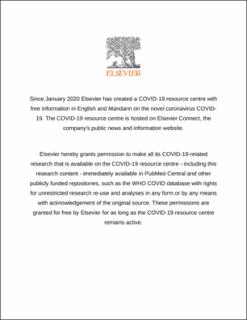| dc.contributor.author | Aganovic, Amar | |
| dc.contributor.author | Cao, Guangyu | |
| dc.contributor.author | Wargocki, Pawel | |
| dc.contributor.author | Kurnitski, Jarek | |
| dc.date.accessioned | 2023-01-12T09:23:16Z | |
| dc.date.available | 2023-01-12T09:23:16Z | |
| dc.date.created | 2023-01-05T17:38:02Z | |
| dc.date.issued | 2022 | |
| dc.identifier.citation | Building and Environment. 2022, 228 . | en_US |
| dc.identifier.issn | 0360-1323 | |
| dc.identifier.uri | https://hdl.handle.net/11250/3042905 | |
| dc.description.abstract | Predictive models for airborne infection risk have been extensively used during the pandemic, but there is yet still no consensus on a common approach, which may create misinterpretation of results among public health experts and engineers designing building ventilation. In this study we applied the latest data on viral load, aerosol droplet sizes and removal mechanisms to improve the Wells Riley model by introducing the following novelties i) a new model to calculate the total volume of respiratory fluid exhaled per unit time ii) developing a novel viral dose-based generation rate model for dehydrated droplets after expiration iii) deriving a novel quanta-RNA relationship for various strains of SARS-CoV-2 iv) proposing a method to account for the incomplete mixing conditions. These new approaches considerably changed previous estimates and allowed to determine more accurate average quanta emission rates including omicron variant. These quanta values for the original strain of 0.13 and 3.8 quanta/h for breathing and speaking and the virus variant multipliers may be used for simple hand calculations of probability of infection or with developed model operating with six size ranges of aerosol droplets to calculate the effect of ventilation and other removal mechanisms. The model developed is made available as an open-source tool. | en_US |
| dc.language.iso | eng | en_US |
| dc.publisher | Elsevier Science | en_US |
| dc.rights | Navngivelse 4.0 Internasjonal | * |
| dc.rights.uri | http://creativecommons.org/licenses/by/4.0/deed.no | * |
| dc.title | New dose-response model and SARS-CoV-2 quanta emission rates for calculating the long-range airborne infection risk | en_US |
| dc.title.alternative | New dose-response model and SARS-CoV-2 quanta emission rates for calculating the long-range airborne infection risk | en_US |
| dc.type | Peer reviewed | en_US |
| dc.type | Journal article | en_US |
| dc.description.version | publishedVersion | en_US |
| dc.source.pagenumber | 13 | en_US |
| dc.source.volume | 228 | en_US |
| dc.source.journal | Building and Environment | en_US |
| dc.identifier.doi | 10.1016/j.buildenv.2022.109924 | |
| dc.identifier.cristin | 2101578 | |
| cristin.ispublished | true | |
| cristin.fulltext | original | |
| cristin.qualitycode | 2 | |

